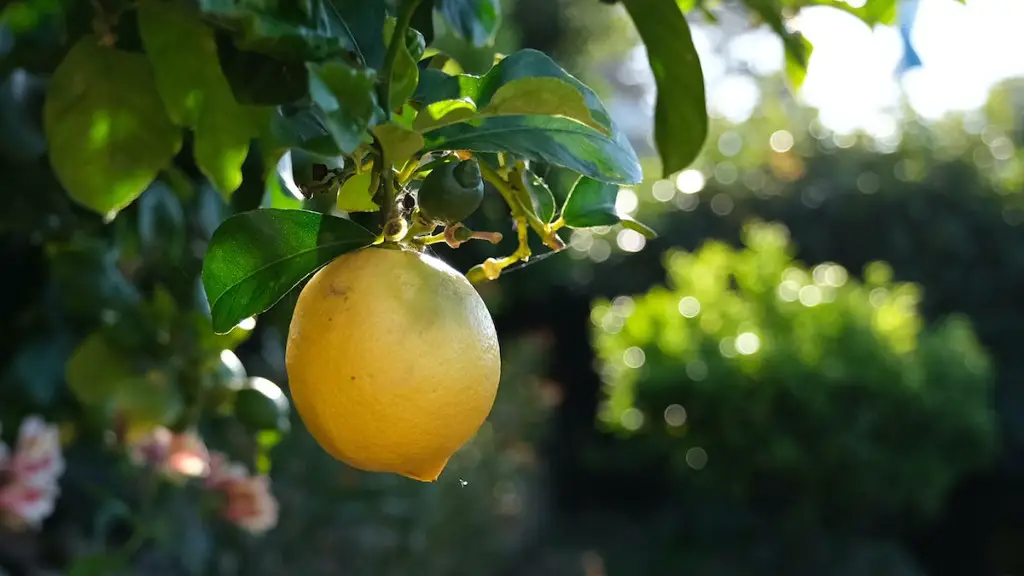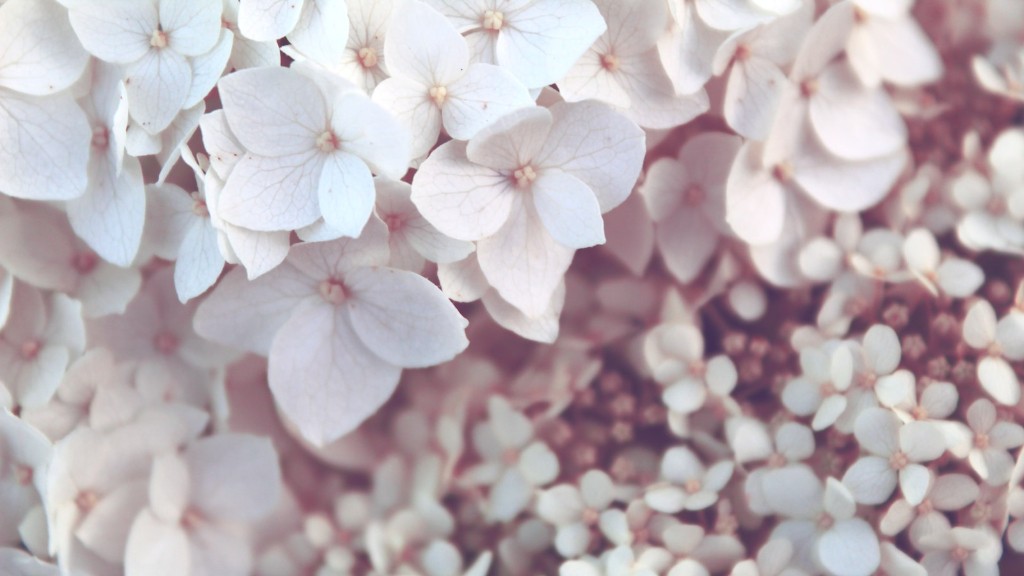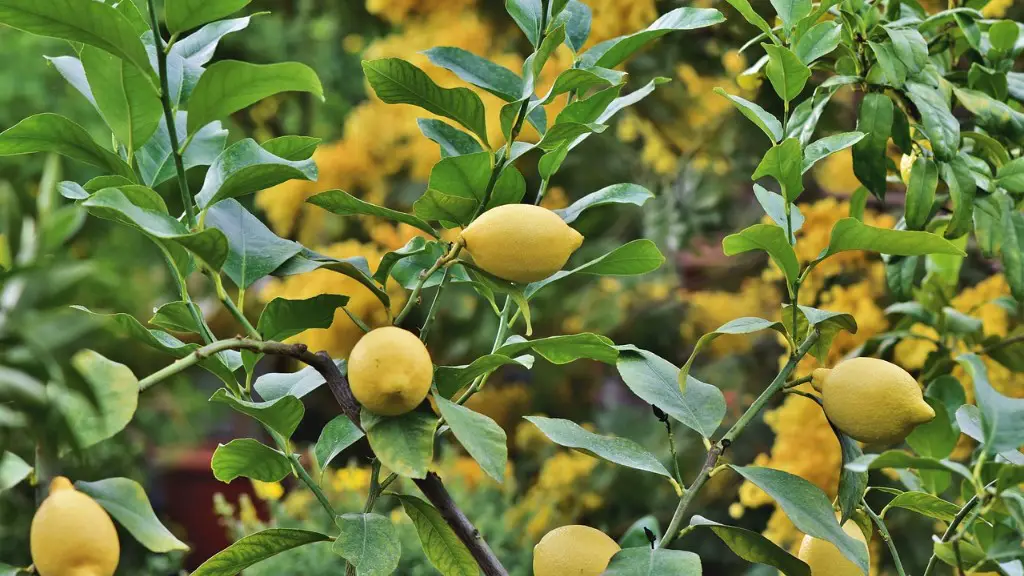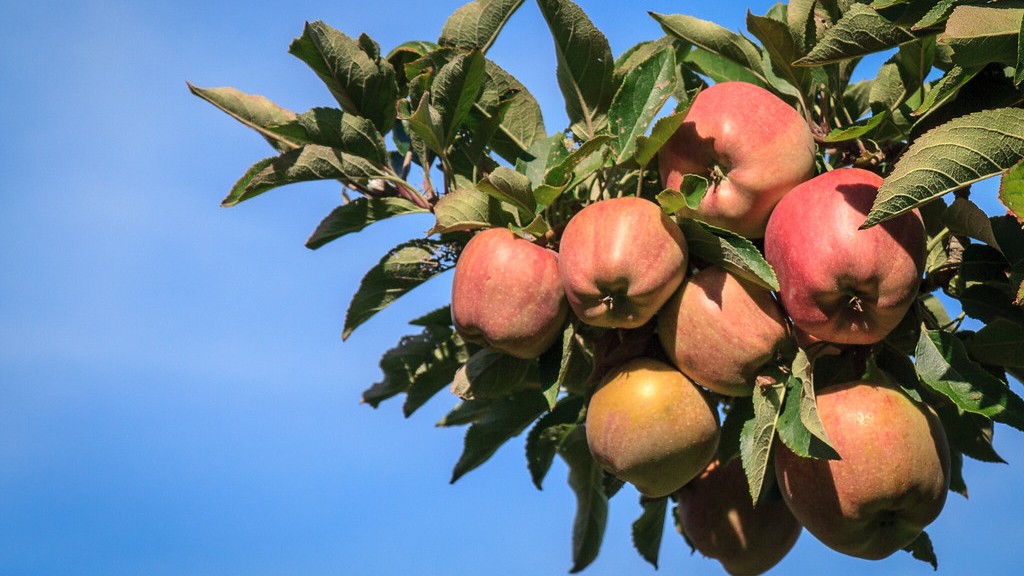Growing lemon tree cuttings is a rewarding activity that requires little effort but yields great result. Before starting the process of rooting, sterilize your tools and materials by soaking them in hydrogen peroxide or ethanol solution. Then prepare your cutting – get a healthy branch from an existing plant and remove most of the leaves. Discard the woody and diseased parts, and make sure to trim any discolored portions. Cut the stem into several cuttings, making sure to make a clean cut.
To aid in the rooting process, dip the ends of each cutting into a rooting hormone. Once they have been soaked in the hormone, insert the cuttings into containers of moistened and sterile potting soil. Cover the cuttings with transparent plastic or glass to maintain high humidity and temperature and prevent the soil from drying out. Keep them in a sunny and warm place to promote rooting.
Check frequently and make sure to mist the cuttings with water if soil appears dry. After about 2 to 6 weeks, the cuttings should develop roots and new leaves. When the cuttings are large enough, transplant them into larger pot filled with soil mixed with compost and fertilizer, and water it regularly to ensure healthy growth. You can also transplant the cutting into the garden or patio planter.
To better promote and maintain the health of your lemon tree, avoid exposing it to temperature swings, drafts, and too much direct sunlight. Some fertilizers specifically designed for citrus plants can supplement the nutrition. Prune more mature trees to maintain desirable shape and provide air circulation. Regularly inspect the tree for signs of diseases and pests, and take preventive and control measures when necessary.
Fertilizing
Fertilizing the lemon tree regularly is necessary to promote growth and health. Start by choosing a fertilizer that is specially formulated for citrus trees. Follow the instructions on the label, but generally a granular type should be applied every three months. Fertilizers can also be dissolved and sprayed directly onto the foliage at least twice a year or applied to the root zone as a soil drench.
To prevent nutrient stress, feed the lemon tree with balanced fertilizer following the 3-2-1 ratio of nitrogen, potassium, and phosphorus, or select fertilizers with similar ratios. Choose fertilizers low in salt content to prevent over-fertilization, and if necessary, flush with water to prevent root burn.
Apply organic compost around the root zone to supplement the nutrition and condition the soil. Organic mulching also helps moisturize the soil and suppress weed growth. Lastly, make sure to irrigate the tree frequently but not too frequently to avoid water stress.
Pruning
Pruning is essential to promote healthy growth and shape the lemon tree. To promote vigorous growth, prune out any dead branches, damaged branches, and criss-crossing branches regularly. Prune out water shoots, or shoots growing straight up from a horizontal branch, to maintain an open center. Cut these branches just above a lateral bud or node.
When it comes to shaping, train the tree to a single leader to encourage good fruit production. To do so, select the main stem and prune away the other branches, and keep it clear of any competing branches. To encourage fruiting, prune away any flower clusters that have set fruit but have not formed into viable fruit buds. If left untended, these clusters can use up the tree’s stored energy.
To enable more efficient irrigation, top-dress the tree about twice a year. With top-dressing, remove any weeds, roots, or debris that has collected around the base of the tree. Then apply a mulch layer of fine bark or compost around the base of the trunk. Lastly, gently trim the lower branches of the tree to let in more air and light.
Harvesting
When it comes to harvesting the lemons from your tree, carefully inspect the fruits for size, color, shape, skin texture and feel before cutting them off. When the fruits are between 1.5 to 2.5 inches in diameter, they can be cut off with a pruner without damaging the tree. Make sure to use sharp pruners to avoid tearing of the plant parts, and leave a short bit of stem attached to the fruit.
If you intend to pick the lemons while they are still green, be mindful that they could be bitter and unripe. To help ripen them, place the green lemons indoors under warm and dry conditions. When they are ready to be picked, they will show a yellow tint and give off the distinct sweet aroma of yellow lemons.
Once you have harvested the lemons from your tree, keep them in a cool and dry place. You can store them for about two weeks if you wrap them with plastic wrap, or for about three weeks if placed in an air-tight container.
Storing
If you harvest more lemons than you can use, one way to store them is by juicing them. To preserve the flavor of the juice, use a sterilized and airtight container and store it in the refrigerator. Stored juice can last up to three weeks.
Alternatively, you can freeze them. Start by cutting each lemon in half or slicing them. Place each cut lemon onto a tray and freeze for about 2 hours. Once the lemon pieces are frozen, transfer them into airtight bags and store them in the freezer for up to 2 months.
If desired, you can also blend the juice with some ice cubes and freeze them into lemon slushies or lemon cubes. Place the blended mixture in a tray and freeze them for several hours until solid. Transfer the cubes into an airtight container or sealed bag and store them in the freezer.
Disease Prevention
Similar to all other fruits and vegetables, lemon trees can be affected by pests and diseases that can harm the health of the tree and reduce the quality of the fruits. To protect your tree, regularly inspect it for signs of diseases and pests. Take preventive and control measures when necessary, such as using homemade solutions like soap sprays, organic insecticides, or applying neem oil.
If you observe any symptoms such as loss of foliage, discoloration, wilting, and damage to young shoots, make sure to identify the disease or pest and deal with it as soon as possible. Chemical insecticides and fungicides can be used to treat the tree, but it’s important to use them only in extreme cases and follow the instructions on the labels.
Promote the health of your lemon tree by avoiding over-fertilization, keeping it in a spot with enough sunlight and temperatures that are appropriate for the lemon tree. Lastly, make sure to irrigate the tree regularly and dispose of any fallen leaves and fruits to reduce the chances of pests and diseases.



